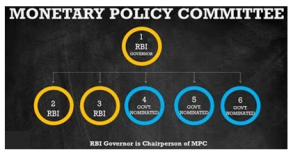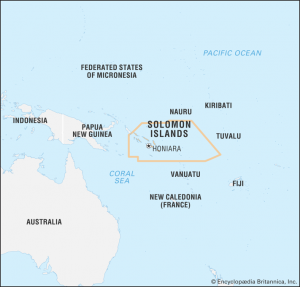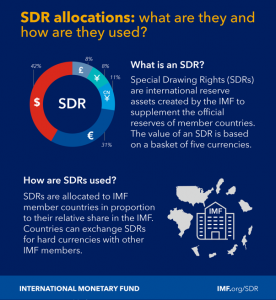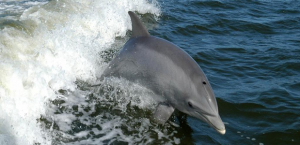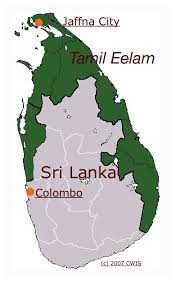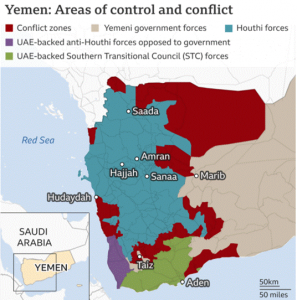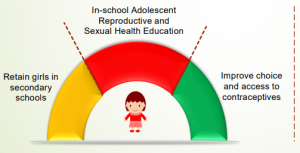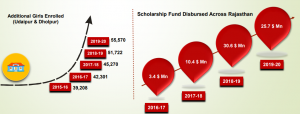TOPIC : REGULATION OF BIG TECH COMPANIES
THE CONTEXT: Recently, the Competition Commission of India (CCI) has imposed a penalty of Rs. 936.44 crores on Alphabet-owned Google for “abusing its dominant position” in markets related to the Android mobile device ecosystem. This article analyses the issues with the growing dominance of Big tech giants and the challenges involved in regulating them.
ABOUT BIG TECH
- The term ‘Big Tech’ is often used to refer to a handful of large technology companies, clubbed together as the Big Four Google, Amazon, Facebook, and Apple have a widespread presence in India. Sometimes, this terminology includes companies like Microsoft, IBM, Baidu, Tencent, and Alibaba. Reliance Jio also displays some of the conceptual markers associated with Big Tech.
- Big Tech is a concept, rather than a static set of companies, which also draws attention to the role of the Indian state since it seeks to leverage data analytics and digital platforms for governance.
- The ‘bigness’ of these large technology companies is reflected in their market valuations, user base, and range of product offerings.
- Their revenues are higher than the GDP of some countries. However, the term ‘Big Tech’ has come to indicate more than just scale and financial strength. It also draws attention to their growing political, social, and cultural influence aspects that are often not shared by other kinds of ‘big’ businesses.
- Search engine giant Google was fined for the second time for abuse of its dominant market position, with the Competition Commission of India (CCI) penalising the company ₹936.44 crores for its app store billing policies. The regulator also issued a cease-and-desist order against Google regarding these policies.
- Google allows developers on its Play store to receive payments for their apps, audio, video, and games, as well as certain in-app purchases, solely through its Google Play Billing System, CCI said in a 199-page order, directing the company to modify its conduct within three months.
WHO ARE THE BIG TECH PLAYERS IN INDIA? AND HOW MUCH IS THEIR MARKET SHARE?
Three of the global Big Tech companies have a widespread presence in India Google, Facebook, and Amazon. Google products and services are ubiquitous in India.

- India constitutes Facebook’s largest market, with more than 270 million total users and 400 million monthly average users for Whatsapp.
- Google Android is a market leader in the mobile operating system market, with a 94.45% market share;42 Google Pay has also clocked more than 300 million transactions in India as of June 2019.
- Amazon also has a large presence, with at least 30% market share in e-commerce and more than 5.5 lakh sellers on its platform.
- While Apple is considered to be a Big Tech company globally, it has a significantly smaller market presence in India, with less than a 3% share in the smartphone market.
- Other foreign companies that display some of the conceptual markers of Big Tech also have a significant presence in India. For example, Walmart is a leader in the e-commerce space, with reportedly 60% market share through its subsidiary Flipkart.
CONTROVERSIAL PRACTICES IN WHICH BIG TECHS WERE INVOLVED IN INDIA:
COMPANIES
CONTROVERSIAL PRACTICES
FACEBOOK AND TWITTER
- Facebook and Twitter were criticized for censoring social media in favour of the Indian government during the 2020–2021 Indian farmers’ protest.
- Facebook employees themselves are questioning the procedure and content regulation practice of Facebook’s Indian team. 11 of its employees also wrote a letter to the Facebook management about the policy head’s decision to allow certain posts that spread hate and racial content.
- The Competition Commission of India (CCI) imposed a penalty of ₹936.44 Crore on Google. The tech giant was found guilty of busing its market position on the Play Store to promote its payments app and in-app payment system.
- The Bois Locker Room controversy refers to the investigation of an Instagram group chat started by a group of schoolboys from Delhi, India in 2020. The group chat’s purpose was to share obscene images of women, many of them underage, which lead to public outcry.
FLIPKART AND AMAZON
- Investigation has been initiated against e-commerce giants Amazon and Flipkart for alleged violation of foreign exchange law, the Enforcement Directorate (ED) Monday informed the Delhi High Court. A bench of Chief Justice Rajendra Menon and Justice A J Bhambhani noted the submissions of the ED that a case has been registered under provisions of the Foreign Exchange Management Act (FEMA) against the two companies.
- Twitter displayed a map of Leh as part of China and later as part of Jammu and Kashmir state (instead of a separate Union Territory). For that, a legal notice has been served to Twitter.
IS THERE ANY INDIAN BIG TECH?
- Reliance Jio also displays some of the conceptual markers associated with Big Tech. In 2019, Jio became India’s leading carrier in terms of the number of users. Since then, Reliance Jio has been expanding into new business verticals as an umbrella platform for all Reliance-owned businesses
- Thinking of Big Tech as a concept, rather than a static set of companies, also draws attention to the role of the Indian state as it seeks to use data analytics and digital platforms for governance.
- As of May 2020, Jio Platforms was reported to be the fourth-largest Indian company by market capitalisation. Much of this is on the back of recent global investments since March 2020, Jio Platforms has attracted more than $15 billion in investments.
HOW ARE BIG TECH COMPANIES ADOPTING IN INDIA?
- Currently, there are over 500 million internet users in India, making India the second largest internet user base in the world.
- Some reports indicate that by 2023 India will have more than 900 million internet users, with most of them accessing the internet through vernacular languages and video content.
- A large and vibrant digital economy is opening up in India due to the proliferation of mobile phones, the spread of internet services, a rising youth population, and the growing adoption of digital services.
INVESTMENTS IN RESEARCH AND DEVELOPMENT
- Big Tech companies seek to leverage and develop India’s large demographic pool for both global and India-focused Research and Development.
- In 2019, Facebook re-hauled the structure of its operations in India and decided to focus on bridging the gendered digital divide, encouraging social interventions to boost economic growth in India. It has done so by investing in startups like Meesho, aimed at nurturing female entrepreneurship.
- Similarly, Google recently established the Google AI Lab, a global research lab that aims to provide opportunities to local Indian talent. The lab will also explore opportunities to leverage Artificial Intelligence (AI) for social good.
EMPHASIS ON SERVICES IN LOCAL LANGUAGES
- Several Big Tech companies in India provides services over voice-based interfaces and in regional languages to address literacy-related barriers to digital services. For example, Google’s AdSense is available in Marathi, Hindi, Bengali, Tamil, and Telugu.67 In 2017, Google partnered with Reliance Jio to reuse its voice assistance technology to operate on feature phones.
- The user base of Google’s voice search has grown exponentially, with most users searching in Hindi.
ENTRY INTO FINTECH (FINANCIAL TECHNOLOGY)
- Fintech in India has boomed after demonetisation and the launch of UPI. Big Tech companies have adapted their business models to ride this wave.
- Since the launch of UPI, Google Pay has acquired nearly 70 million users and carried out more than 2.5 billion transactions, closely followed by Walmart-owned PhonePe.
- Whatsapp Pay has been allowed a phased roll-out in India, provided Facebook maintains compliance with RBI’s data localisation norms.
- Aside from Amazon Pay, Amazon has also launched an instant zero-interest credit service in India, called Amazon Pay Later.
DIGITAL INFRASTRUCTURE
- In 2016, Google launched the Google Station project (now defunct) in India to provide free high-speed public Wi-Fi to more than 400 train stations in India.
- In June 2018, more than eight million people used the service every month. Google also announced plans to launch a second cloud region in India, to strengthen cloud services in India for businesses, hospitals, and public sector organizations, amongst others.
ONLINE AND OFFLINE SERVICES
- Many Big Tech companies are leveraging offline models of service delivery to effectively reach users in smaller towns and cities in India.
BIG TECH COMPANIES INFLUENCE OUR MARKET AND SOCIETY IN FOUR KEY AREAS:
MARKET POWER
- Market operations of global Big Tech companies in India create benefits for consumers and businesses. Many start-ups and tech companies rely on Big Tech companies for digital infrastructure, research, and innovation. However, Big Tech companies are prone to monopolistic and anti-competitive behaviour.
PRIVACY
- Big Tech platforms allow for data-based personalization of the internet experience and access to new services. Such benefits, however, come at a significant cost to individual and group privacy. Such personalisation also influences individual and group capacities for self-determination.
INFORMATION GATEWAY
- Social media platforms and search engine operations of Big Tech companies increasingly serve as the primary source of information, news, and means of communication for many users in India. Yet, this also gives Big Tech companies inordinate influence in shaping how people access information and communicate with one another, making them arbiters of free speech.
- Big Tech platforms also contribute to the spread of misinformation and hate speech, while becoming increasingly politicised.
SOVEREIGN INTEREST
- While the Indian State benefits from Big Tech companies’ infrastructure and innovation to fill gaps in its own capacity and reach, this also raises concerns around democratic accountability, data sovereignty, the impact on domestic businesses, and the distribution of technology gains.
TARGET OF REPRESSIVE ACTIVITIES
- Women is the most vulnerable to cyber abuse like online harassment.
- Online offences are often normalised due to the difficulty in tracing offenders and the complexity and inaccessibility of the justice delivery mechanisms. This creates mistrust of the public towards the justice system, leading to the further marginalisation of women.
- Increased attention to women in social media often makes them the target of repressive activities. This results in gendered barriers for women online as in public places.
SECURITY ISSUES
- Propaganda information to recruit terror groups like AQIS, and LeT on telegram have been intercepted by National Investegating Agency(NIA).
- India has also suffered from it however less severely. An increasing number of cases of youth being influenced by social media to carry out propaganda of hate and violence has been reported in many areas.
- By ‘cyber-planners’, who will be responsible for planning terror attacks, identifying recruits, acting as “virtual coachers”, and providing guidance and encouragement throughout the process.
CURRENTLY, HOW INDIA IS REGULATING BIG TECHS?
- The government enacted the Competition Act, of 2002. The Act established the Competition Commission of India (CCI). Later the Act was amended in 2007. The CCI has been established to eliminate practices having an adverse effect on competition. The commission also promotes and sustains competition and protects the interests of consumers. The CCI will step in if any of the tech giants will get involved in the anti-competitive practice.
- Intermediaries (providers of network service, telecom service, Internet service, and web hosting) are required to preserve and retain specified information. They also have to obey the directions issued by the government from time to time.
- In return intermediaries are protected from legal action for user-generated content (The big techs used this clause to move away from liability and responsibility in digital space).
- The Information and Technology Act, of 2000 governs all activities related to the use of computer resources in India. Some of the important provisions of the Act are
- Section 69 of the Act gives power to the government to issue directions “to intercept, decrypt or monitor any information generated, transmitted, received or stored” in any digital equipment.
- Section 69A of the Act provides power to the government to block access to any information generated, transmitted, received or stored, or hosted in the digital space.
ISSUES WITH BIG TECHS IN INDIA
MONOPOLY
- There is a suspicion that big tech companies were acquiring more monopoly power leading to a lack of free competition. There is a conjunction of technology and finance here. The more companies were valued, the more they needed monopoly rent extraction to be able to justify those valuations.
LACK OF ACCOUNTABILITY
- There was an irony in an opaque algorithm being the instrument of a free, open, and equitable society.
MIXED IMPLICATIONS FOR THE DISTRIBUTION OF WEALTH
- While the companies had an immense economic impact, their distributive implications were more mixed.
- They empowered new players, but they also seem to destroy lots of businesses. These companies themselves became the symbol of inequality of economic and political power.
THE LACK OF ACCOUNTABILITY AND STANDARDS IN REGULATING FREE SPEECH
- Big tech companies set themselves up almost as a sovereign power. This was most evident in the way they regulated speech, posing as arbiters of permissible speech without any real accountability or consistency of standards.
- The prospect of a CEO exercising almost untrammeled authority over an elected president only served to highlight the inordinate power these companies could exercise.
CONFLICT OF INTEREST
- Many of the big tech companies were not, as they claimed, mere platforms. This is because they began to curate and generate their own content, creating possible conflicts of interest.
CHALLENGES IN REGULATING BIG TECHS IN INDIA:
SMARTPHONES AND THE INTERNET OF THINGS (IoT)
- Smartphones and the Internet of Things (IoT) have become major drivers for the growth of big tech companies in the last decade. India is currently witnessing massive growth in smartphone usage and IoT.
- India is also witnessing an increase in the population of users who are coming online for the first time. So regulating Big Tech strictly will leave the consumer with no other alternative. Hence, it is important to cater to the needs of people.
DEPENDENCY ON VARIOUS SERVICES
- Everyday life is dependent on various apps and technologies. Nowadays technology is linked with remote working and studying, public transport, shopping, telemedicine, on-demand music, video streaming, etc. Tech giants with their presence in the digital space created a monopoly in essential services.
ESSENTIAL NATURE OF SERVICES
- The essential nature of the services provided by them. These tech giants provide Freedom of Expression to individuals and also made billions of people depend on their services. Like, as Google on the internet, Amazon on e-commerce, etc.
THE CHALLENGE OF CROSS-PLATFORM CONNECTIVITY
- Users of Facebook and Google can sign in and access services over food, grocery delivery, and various other companies. This can be used to mine the accounts of users. This creates a challenge to regulate the tech giants alone. To get the proper desired output, one needs to regulate the entire ecosystem. But it is not feasible.
RECOMMENDATIONS OF COMPETITIONS LAW REVIEW COMMITTEE
- Introduction of a ‘Green Channel’ for combination notifications to enable fast-paced regulatory approvals for the vast majority of mergers and acquisitions that may have no major concerns regarding appreciable adverse effects on competition. The aim is to move towards a disclosure-based regime with strict consequences for not providing accurate or complete information.
- Combinations arising out of the insolvency resolution process under the Insolvency and Bankruptcy Code will also be eligible for “Green Channel” approvals.
- Introducing a dedicated bench in NCLAT for hearing appeals under the Competition Act.
- Introduction of express provisions to identify ‘hub and spoke’ agreements as well as agreements that do not fit within typical horizontal or vertical anti-competitive structures to cover agreements related to business structures and models synonymous with new-age markets.
- Additional enforcement mechanism of ‘Settlement & Commitments” in the interests of speedier resolution of cases of anti-competitive conduct.
- Enabling provisions to prescribe necessary thresholds, inter alia, deal-value threshold for merger notifications.
- CCI to issue guidelines on the imposition of a penalty to ensure more transparency and faster decision making which will encourage compliance by businesses.
- Strengthening the governance structure of CCI with the introduction of a Governing Board to oversee advocacy and quasi-legislative functions, leaving adjudicatory functions to the Whole-time Members.
- Merging DG’s Office with CCI as an ‘Investigation Division’ as it aids CCI in discharging an inquisitorial rather than adversarial mandate. However, functional autonomy must be protected.
- Opening of CCI offices at the regional level to carry out non-adjudicatory functions such as research, advocacy, etc., and interaction with State Governments and State regulators.
THE WAY FORWARD
MARKET
- Platform Neutrality, so that Big Tech platforms cannot unfairly discriminate against other businesses using their platform.
- Platform Interoperability, to enable consumer choice and reduce the weight of network effects
- Update Competition Policy to include control over data and network effects.
MEDIA LITERACY AND PUBLISHER ETHICS
- Publisher Ethics so that News and social media platforms are held to the same ethical standards as legacy media.
- Algorithmic Accountability, to identify, assess and penalise harmful algorithmic amplification.
- Media Literacy, to enable citizens to take more considered decisions
PRIVACY
- Individual and Collective Rights, for citizens to take decisions about how their data is collected and processed by large tech companies and hold these companies accountable for misuse.
- Privacy Protecting Business Models that reduce Big Tech companies’ commercial dependence on the processing of personal data.
- Data Stewardship Models, that allow individuals to safely share their data with businesses.
Sovereign Interests
- Build State and Market Capacity, by investing in education, research, entrepreneurship, and other kinds of social capital
- Equitable Taxation to ensure that developing countries can gain fair and reasonable tax revenue from Big Tech firms.
- Better Cross-border Flows to ensure that transfer of data outside India does not inhibit domestic innovation, law enforcement or other services
BUILD COLLECTIVE RESILENCE
- Technology does not exist in a void and enters a society that is already complex. Society and communities need to be strengthened to collectively maximize the benefits and minimize the harms of technology. In terms of Big Tech, this could imply investing in a regulatory capacity and media literacy.
THE CONCLUSION: Innovations should prioritize individuals’ agency, material well-being, autonomy, and democracy. Regulation will be required to ensure that innovation is aligned with societal trajectories.
A vibrant public discussion on the role of technology will help navigate the uncertainty that may result from technological innovation. Technology should protect its users by default to ensure the well-being of each individual, especially vulnerable groups. Society and communities need to be strengthened to collectively maximize the benefits and minimize the harms of technology.
